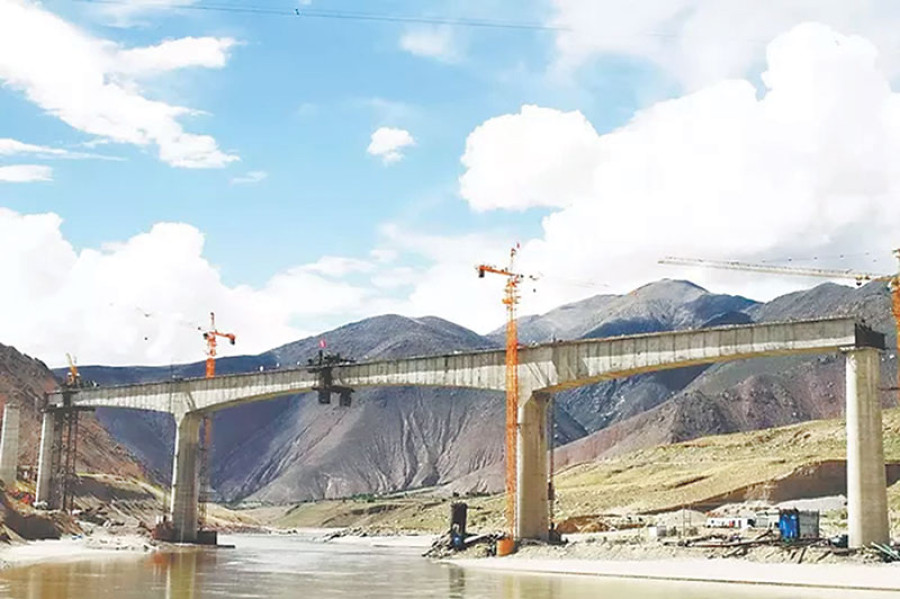Opinion
Oli visits China
PM’s visit to China is an ideal time to deepen Nepal-China engagement
Lekhanath Pandey
Nepal’s ruling left government may not be of everyone’s choice but for a communist country like China it can be an ideal time to enhance bilateral cooperation with Nepal where China’s ‘charm offensive’ counts hugely to contain India’s geo-political dominance.
China has been trying hard to find a stable regime and reliable partner in Nepal since the monarchy was overthrown in May 2008. Finally, after many decades Nepal has had a stable and strong government as Prime Minister KP Oli enjoys a two-third majority. The two countries now have the opportunity to explore and enhance areas of cooperation in multiple sectors like connectivity, infrastructure, energy and security. Many of them can be pursued under the framework of Belt and Road Initiative (BRI), a flagship Chinese project, of which Nepal is a party since May 2017.
Pragmatic foreign policy
As PM Oli is all set to embark on a six-day state-visit of China starting from June 19, these issues will be raised at the highest level. His entourage comprising four key cabinet-colleagues— Ministers for Home Affairs; Foreign Affairs, Water Resources and Irrigation; and Physical Infrastructure and Transport—reflects the importance given to and priority set for this trip. This is his second visit to Beijing since March 2016, when he was heading a fragile coalition and was perceived as an anti-Indian or a pro-Chinese. Now, he holds a strong government having the mandate to govern for five years. After his return to power in February, PM Oli has been trying to project a ‘pragmatic’ foreign policy and to win the confidence of both neighbors—India and China. All his diplomatic endeavors have been focused on not to be seen as siding with either one.
A month after PM Oli’s visit to India as his first port of call, his Indian counterpart Narendra Modi’s visit in the second week of May was widely perceived as an attempt to slow down Chinese influence in Nepal. Modi was able to divert attention from it by temple visits and soft diplomacy. Nevertheless, India pledged to construct a railway up to Kathmandu via Raxual and initiate a water-link project to pave the way for Nepal’s access to the sea. Such gesture from the southern neighbor was made keeping in mind the China’s interest in the trans-Himalayan railway project. However, there is slim chance of early realisation of such ventures given the poor track record of India’s development commitments and Indian joint-venture projects in Nepal.
PM Oli’s growing affinity with India is an issue of debate if this would affect Chinese faith and support to Nepal. However, China has taken his visit to India in a positive light and also shown its interest to capitalise the constructive vibes generated through the recent high level exchange of visits between Nepal and India. Chinese Foreign Minister Wang Yi during his meeting with his Nepali counterpart, Pradeep Gyawali in Beijing in April floated a proposal of China-Nepal-India economic corridor. India is yet to consider this idea affirmatively. If capitalised, this could help restore Nepal’s ancient glory as a Himalayan-transit. But this idea has as much economic prospects as geo-political implications.
Implementation is key
Despite being a next door neighbor, China’s foreign direct investment (FDI) in Nepal vis-à-vis other South Asian countries has remained meager. China’s pledging of Rs8.35 billion ($81 million) worth FDI to Nepal during the fiscal year 2016-17 topped India’s that stood at Rs1.99 billion. Yet China’s ongoing investments in Bangladesh ($23 billon) and Pakistan ($61 billion) is much higher. Nepal thus has to win Chinese trust to bring more Chinese investment in Nepal. Erstwhile, the Nepali Congress-led government quashed a multi-billion dollar contract with China’s Gezhouba Group for the construction of the much awaited Budhi Gandaki Hydropower Project citing lack of transparency. firm, which won’t be easy for him as previous government.
Most agendas of the prime minister’s forthcoming visit are the same as his last trip in March 2016. Many of them are yet to be initiated. Therefore, problem of our engagements with China is not winning too many investment pledges, but executting them effectively. Besides, there is deep apprehension of possible behind-the-curtain deal, debt-trap or lack of benefits for locales. If such issues are ignored, Chinese projects will be no different than the Indian projects , thereby jeopardising Nepali’s positive sentiments towards China.
There is quite a resemblance between the current leadership in China and Nepal. Prime Minister Oli has become a powerful leader of Nepal in decades; while President Xi has been dubbed as the most powerful Chinese leader after Chairman Mao. The colors, contents and characters are also similar as both the leadership hold nationalist images and enjoy a strong mandate. Both are politically leftist and economically capitalist. No such resemblance was witnessed in modern history of Nepal and China, which could be a launching pad to deepen bilateral engagements and diversifying bilateral cooperation.
The author is an assistant professor at Tribhuvan University and writes on geopolitics and strategic issues




 7.12°C Kathmandu
7.12°C Kathmandu











